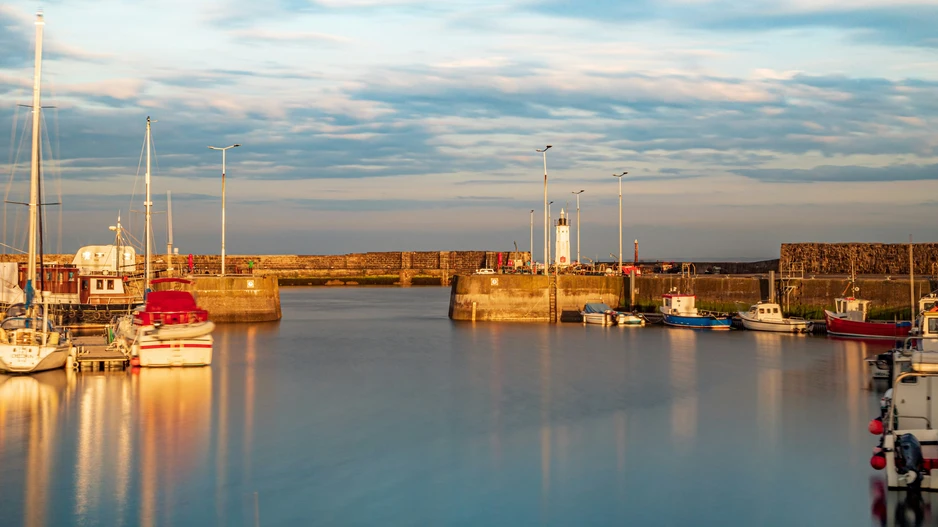Picture you're standing on a clifftop path. The North Sea stretches endlessly before you while the morning sun turns sandstone cliffs to gold. Behind you, a whitewashed fishing village is just stirring to life, smoke curling from cottage chimneys. Ahead, the path winds through wildflower meadows toward a ruined castle perched dramatically above the waves. A seal pops its whiskered head above the surface, watching you with curious eyes before disappearing into the turquoise depths.
It sounds like a Canadian or Northern European scene, right? Somewhere remote, maybe Iceland or Norway. But it’s not. It’s not wilderness requiring weeks of planning and serious mountaineering skills.
This is the entire Fife Coastal Path – 117 miles (188km) of Scotland's most accessible yet spectacular coastal adventure, all a 30-minute train ride from Edinburgh. Here’s your complete guide to one of the most rewarding coasts in the UK.
Fife Coastal Path Map
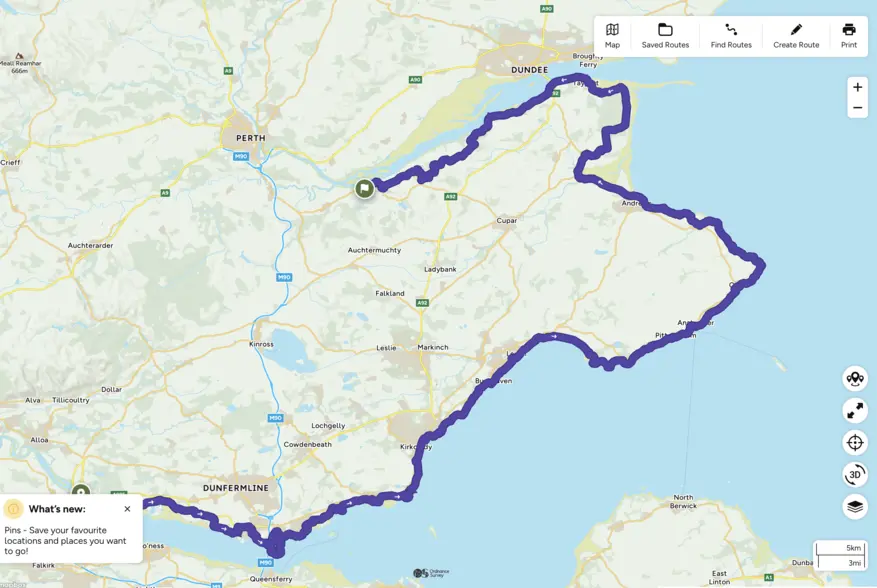 The Fife Coastal Path stretches 113 miles (183km) along Scotland's eastern peninsula, from Kincardine on the Forth estuary to Newburgh on the River Tay. It's Scotland's longest continuous coastal path, offering everything from gentle beach strolls to scrambling adventures like the famous Chain Walk at Elie.
The Fife Coastal Path stretches 113 miles (183km) along Scotland's eastern peninsula, from Kincardine on the Forth estuary to Newburgh on the River Tay. It's Scotland's longest continuous coastal path, offering everything from gentle beach strolls to scrambling adventures like the famous Chain Walk at Elie.
Just 30 minutes by train from Edinburgh, this spectacular route threads through:
Historic fishing villages
15 award-winning beaches
Ruined castles
Red squirrel hangouts
World-famous golf courses
and the UK’s best fish and chips (officially).
All while bottlenose dolphins patrol the waters offshore just off to your side. And what you’ll find is the perfect balance of accessibility and adventure. Unlike remote Highland routes requiring serious wilderness skills, the Fife Coastal Path passes through civilisation every few miles, with regular train stations and bus routes making it easy to walk as much or as little as you want. Most walkers complete the full Fife Coastal Path route in 7-10 days, though the stunning East Neuk section from Lower Largo to St Andrews delivers the absolute best of Scottish coastal walking in a long weekend. Whether you're planning to tackle the whole week-long adventure or want to cherry-pick a section that draws your fancy, there really is something for everyone.
What makes the Fife Coastal Path special?
The Fife Coastal Path hits a sweet spot in Scottish walking – challenging enough to feel like a proper adventure, yet accessible enough that you won't need mountain rescue on speed dial. Unlike remote Highland routes or the Southwest Coast Path's punishing climbs, Fife delivers spectacular coastal scenery with civilisation never more than a few miles away.
🏛️ Incredible historical variety
Walk beneath the UNESCO World Heritage Forth Bridge one day, explore 3,000-year-old Pictish caves the next. Medieval St Andrews, 12th-century fishing villages, and ruined castles create a living timeline of Scottish history.
🚂 Unbeatable accessibility
Regular train stations and hourly buses mean you can walk as much or as little as you want. The Stagecoach 95 shadows the scenic East Neuk section, turning this into a flexible adventure rather than a committed expedition.
🏖️ Extraordinary coastal diversity
From gentle sandy beaches to thrilling scrambles like the Chain Walk at Elie. Fifteen award-winning beaches, dramatic clifftops, hidden coves, and those famous bottlenose dolphins offshore.
🍻 Perfect social balance
Chat with friendly locals sharing secret beaches, join fellow walkers for impromptu pub lunches, and get insider tips from B&B hosts who genuinely care. Go on your own, as a couple and meet others, or a big group of friends who bump into other people who are all there for the same reason.
⭐ World-class highlights within easy reach
The UK's officially best fish and chips, Scotland's home of golf, and some of Britain's most photographed harbours – all connected by one spectacular walking route.
All of this combined - genuine adventure, flexible logistics, and authentic Scottish hospitality - makes the Fife Coastal Path uniquely rewarding.
How to plan your Fife Coast adventure: Full route vs best bits
There are plenty of ways to explore the Fife Coastal Path, and it really depends on what you’re after. Let’s break it down.
The full route experience (7-10 days)
If you’re looking to experience the coast and everything it has to offer, you’ll need to set aside a long week minimum, up to 10 days to hit all the top spots and have a little time to discover the hidden gems, though your pace depends entirely on how many castle explorations, seafood stops, and beach detours tempt you along the way. This is, however, the ultimate fife coastal path adventure.
Day 1: Kincardine to Limekilns (18km/11 miles)
Start beneath the Kincardine Bridge's art deco towers, following the path through Culross – Scotland's most complete 17th-century village. The ochre-painted Culross Palace (£14 entry) showcases how wealthy merchants lived 400 years ago.
Stay at The Coorie in Limekilns (from £110/night), a beautifully renovated cottage with estuary views and locally sourced breakfast.
Day 2: Limekilns to Burntisland (27km/17 miles)
Pass beneath the mighty Forth Bridge – that Victorian engineering marvel you'll recognise from every Scottish railway poster. Stop for lunch at the Boathouse in South Queensferry before continuing to Burntisland.
The Burntisland Sands Hotel (from £89/night) offers seafront rooms and excellent evening meals featuring Fife produce.
Day 3: Burntisland to Leven (30km/19 miles)
Today's long stretch passes through Kirkcaldy (birthplace of economist Adam Smith) before reaching quieter coastal sections. Break up the urban walking with a visit to Ravenscraig Castle's dramatic clifftop ruins.
In Leven, The Caledonian Hotel (from £75/night) provides traditional comfort and hearty Scottish breakfasts to fuel tomorrow's walking.
Day 4: Leven to Elie (20km/12 miles)
The magic really begins as you enter the East Neuk. Walk through Lower Largo (birthplace of Robinson Crusoe's inspiration) before hitting spectacular Shell Bay – all pristine sand and zero crowds.
The Ship Inn in Elie (from £140/night) combines boutique rooms with one of Scotland's finest gastropubs, where local langoustines come with champagne sauce and sunset views.
Day 5: Elie to Anstruther (10km/6 miles)
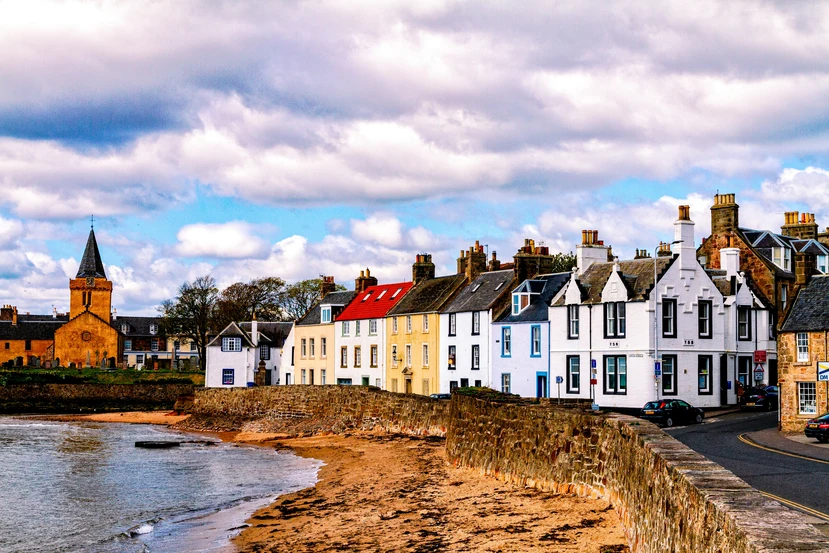 Today's short distance allows time for Elie's famous Chain Walk – a thrilling scramble using fixed chains along the rocks (only at low tide). Pass through St Monans with its church perched impossibly close to the cliff edge.
Today's short distance allows time for Elie's famous Chain Walk – a thrilling scramble using fixed chains along the rocks (only at low tide). Pass through St Monans with its church perched impossibly close to the cliff edge.
The Waterfront in Anstruther (from £95/night) puts you steps from the harbour and that famous fish and chips.
Day 6: Anstruther to Crail (7km/4 miles)
Another gentle day through picture-perfect fishing villages. Visit the Scottish Fisheries Museum (£9.50) in Anstruther before the short clifftop walk to Crail.
The Shoregate (from £85/night) occupies a 17th-century townhouse with original features and modern comfort, plus the owner's fantastic local knowledge.
Day 7: Crail to St Andrews (21km/13 miles) 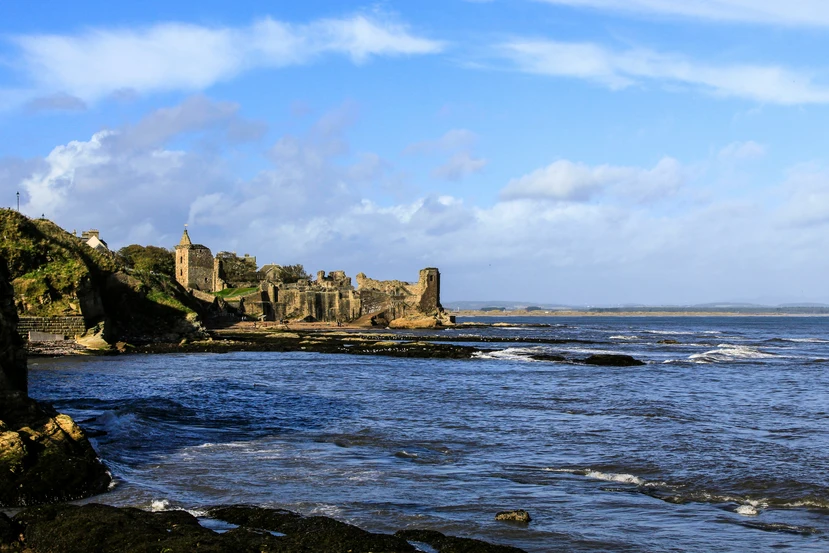 The path turns wilder through Fife Ness, where birdwatchers gather during migration season. Pass the pristine sands of Kingsbarns beach before tackling the tidal section (check times carefully).
The path turns wilder through Fife Ness, where birdwatchers gather during migration season. Pass the pristine sands of Kingsbarns beach before tackling the tidal section (check times carefully).
The Albany Hotel in St Andrews (from £120/night) offers traditional hospitality in a Georgian townhouse just off the famous golf course.
Day 8: St Andrews to Newport-on-Tay (29km/18 miles)
Through Tentsmuir Forest's Scots pines, where red squirrels scamper overhead, emerging onto vast beaches stretching toward the Tay Bridge.
The Newport Restaurant (rooms from £110/night) combines accommodation with fine dining overlooking the Tay.
Day 9: Newport-on-Tay to Newburgh (27km/17 miles)
The final stretch follows the Tay estuary through peaceful farmland and woodland to the journey's end at Newburgh. Celebrate at The Newburgh Inn with local ales and views across to the Highlands beyond.
Five reasons to tackle the full Fife coastal path route:
Experience Scotland's complete eastern peninsula in one epic journey
Witness the dramatic transition from industrial heritage to pristine nature
Build genuine fitness and mental resilience over consecutive days
Create bonds with fellow long-distance walkers met along the way
Earn ultimate bragging rights at the finish line
Essential information:
Best Time: April-June or September-October for ideal weather and fewer crowds
Getting There: Train to Kincardine from Edinburgh (1 hour) via Stirling
Getting Back: Bus from Newburgh to Perth, then train to Edinburgh (2 hours total)
Luggage Transfer: Absolute Escapes (£45-60 per bag per day)
Total Cost Estimate: £800-1500 per person, including accommodation and meals
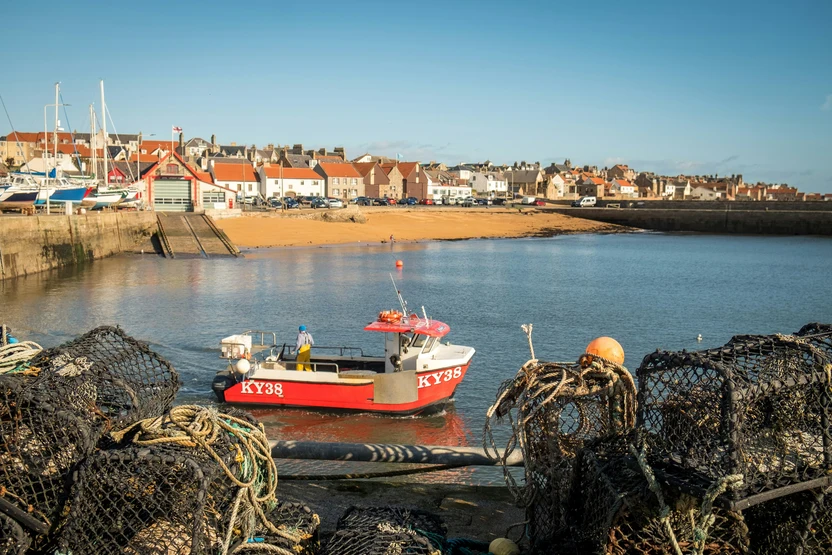 If you don’t have a full week to do the full fife coastal path? Then just cherry-pick the highlights. Not everyone has a week to spare, and honestly, the Fife Coastal Path's beauty lies partly in its flexibility. The East Neuk section from Lower Largo to St Andrews delivers the absolute cream of Scottish coastal walking in just 2-3 days, perfect for a long weekend escape.
If you don’t have a full week to do the full fife coastal path? Then just cherry-pick the highlights. Not everyone has a week to spare, and honestly, the Fife Coastal Path's beauty lies partly in its flexibility. The East Neuk section from Lower Largo to St Andrews delivers the absolute cream of Scottish coastal walking in just 2-3 days, perfect for a long weekend escape.
The East Neuk Golden Stretch (Lower Largo to St Andrews - 50km)
This is what dreams are made of – whitewashed fishing villages, hidden coves, medieval harbours, and endless coastal views. Split it over three leisurely days with two overnight stops, giving plenty of time for village exploration and seafood indulgence.
Start in Lower Largo, birthplace of Alexander Selkirk (the real Robinson Crusoe), where the Crusoe Hotel (from £89/night) offers panoramic bay views and serves excellent seafood. The first day's 10km to Elie passes through Shell Bay's untouched sands – bring a picnic and prepare to linger.
Day two covers the East Neuk villages: St Monans, Pittenweem, Anstruther, and finishing in Crail. Each deserves exploration – St Monans for its zigzag pier and windmill, Pittenweem for its active fishing fleet and arts scene, Anstruther for those award-winning chips, and Crail for Scotland's most photographed harbour.
Book The Golf Hotel in Crail (from £100/night) with its rooftop terrace overlooking the Firth of Forth.
The final day tackles the wilder 21km to St Andrews, including the tidal section that adds genuine adventure (time it within 2 hours of low tide). Your reward? Arrival in Scotland's home of golf, where Fairmont St Andrews (from £180/night) offers luxury spa facilities to soothe tired muscles.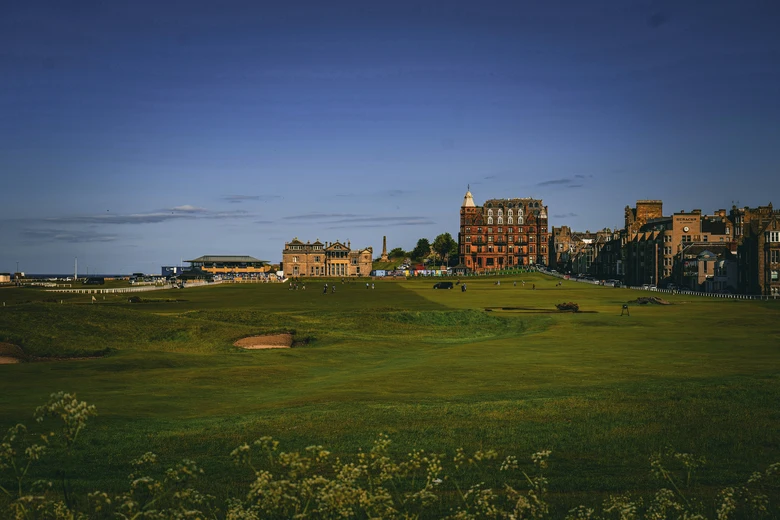 Essential information:
Essential information:
Best time: May-June for wildflowers, September for autumn colours
Getting there: Train to Leven (new station opened 2024), then bus to Lower Largo
Return options: Direct bus from St Andrews to Edinburgh (90 minutes)
Accommodation booking: Essential in summer, book 2-3 months ahead
Budget option: Stay in St Andrews and day-walk sections using buses
The Villages Along the Fife Coastal Path That Steal Your Heart
There are endless highlights along the Fife Coast, but it's many of the locations, the villages set along its edges, that make it so special.
Crail – The most photographed harbour in Scotland
Crail hits you like a watercolour painting comes to life. Its miniature stone harbour, barely bigger than a tennis court, has launched fishing boats since the 12th century.
Today's fleet might be smaller, but lobster boats still work these waters, their colourful creels stacked against weathered stone walls that have witnessed 900 years of maritime history. The village earned its Royal Burgh status in 1178, making it one of Scotland's oldest fishing ports. Wander the wynds (narrow lanes) above the harbour to discover hidden courtyards and crow-stepped gables that wouldn't look out of place in medieval Bruges. The tolbooth with its distinctive Dutch influence speaks to centuries of North Sea trade that made Crail wealthy.
For accommodation, Caiplie House (from £95/night) occupies a restored 17th-century merchant's house with original features and sea views. Alternatively, Crail Harbour Gallery & Tearoom serves exceptional crab sandwiches with a side of local art. Don't miss the lobster shack at the harbour (weekends only), where boats-to-plate doesn't get fresher.
Essential information:
Must-See: Museum and Heritage Centre (free, donations welcome)
Hidden Gem: Secret beach below castle ruins (follow path behind churchyard)
Photo Spot: Early morning at the harbour for perfect light
Parking: Free car park above the harbour
Market Day: Saturday food market (June-September)
St Monans – Where church meets sea
St Monans keeps a lower profile than its famous neighbours, making it arguably the East Neuk's most authentic fishing village. The Auld Kirk sits just 20 metres from the cliff edge – Scotland's church closest to the sea – its weathered stones dating to 1362. Legend says King David II built it after surviving a shipwreck, though historians suggest less dramatic origins.
The village's zigzag pier has become an Instagram sensation, its distinctive double-bend creating perfect leading lines for photographers. Visit at sunrise when the low light turns everything golden, and you'll likely have it to yourself. The renovated windmill on the western approach adds fairy-tale charm to an already magical setting.
Craig Millar @ 16 West End (£80-95 tasting menu) ranks among Scotland's finest restaurants, where the chef-owner serves just 20 covers nightly. Book months ahead.
For simpler pleasures stay at The Inn at Lathones (from £140/night), a converted coaching inn ten minutes inland with luxury rooms and acclaimed dining.
Essential information:
Must-see: Salt pans ruins (medieval salt production site)
Hidden gem: St Monans Windmill visitor centre
Photo spot: Zigzag pier at sunrise/sunset
Tide dependent: Rock pools below the church at low tide
Local secret: Tom Morris grave (designed the first 18-hole golf course)
Anstruther – Fish and chips pilgrimage
Anstruther (locals say "Anster") wears its fishing heritage proudly. The Scottish Fisheries Museum sprawls across historic harbourside buildings, telling 500 years of North Sea fishing through beautifully preserved boats and touching personal stories. But let's be honest – most visitors come for the chips. The Anstruther Fish Bar has won "UK's Best Fish and Chips" multiple times, and queues snake along the harbour even in winter. The secret? Sustainably sourced haddock, beef dripping for the chips, and a batter recipe unchanged since 1970. Across the harbour, The Wee Chippy offers equally excellent fish with shorter waits.
Stay at The Waterfront (from £95/night), where harbour-view rooms let you watch the fishing boats return with tomorrow's catch or splash out at The Spindrift (from £110/night), a boutique guesthouse where breakfast includes Anstruther's famous Arbroath smokies. For something different, book a seal and seabird cruise to the Isle of May (£30, April-September) – puffins guaranteed in breeding season.
Essential information:
Must-Visit: Scottish Fisheries Museum (£11 adult)
Best Chips: Anstruther Fish Bar (expect 20-minute queues)
Hidden Gem: Cellardyke harbour (quieter twin village, 10-minute walk)
Wildlife Trip: May Princess boat trips (3-hour round trip)
Local Events: Anstruther Harbour Festival (July)
Elie – Adventure playground of the East Neuk
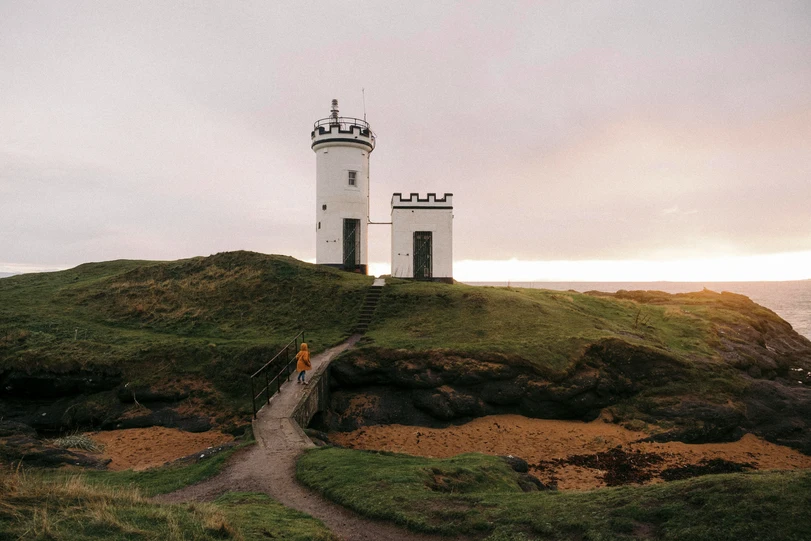 Elie brings a different energy to the East Neuk – less working fishing village, more Victorian resort with modern adventure credentials. The sweeping sandy beach attracts windsurfers and families alike, while the famous Chain Walk offers Scotland's only fixed-chain coastal traverse, a quarter-mile scramble that's thrilling without being terrifying (low tide only, check times religiously).
Elie brings a different energy to the East Neuk – less working fishing village, more Victorian resort with modern adventure credentials. The sweeping sandy beach attracts windsurfers and families alike, while the famous Chain Walk offers Scotland's only fixed-chain coastal traverse, a quarter-mile scramble that's thrilling without being terrifying (low tide only, check times religiously).
The town's cricket ground must rank among the world's most scenic, while the periwinkle-blue beach huts have become almost as photographed as Crail's harbour. Ruby Bay's red sand (actually garnets) adds geological interest, and you can still find tiny gems among the grains.
The Ship Inn (from £140/night) combines boutique accommodation with one of Scotland's best gastropubs – their seafood platter requires strategic planning and possibly sharing. For self-catering, Elie Beach House (from £200/night, sleeps 6) puts you literally on the sand. Don't miss Elie Deli for picnic supplies or their legendary sausage rolls.
Essential information:
Adventure must-do: Chain Walk (2 hours before/after low tide only)
Beach activities: Elie Watersports (SUP/kayak/windsurf hire)
Hidden gem: Lady's Tower (Lady Janet Anstruther's private bathing house)
Parking: Paid car park at Ruby Bay (£5 all day)
Weather dependent: Beach cricket matches (summer Sundays)
St Andrews – Where medieval meets modern
St Andrews needs little introduction – home of golf, Scotland's oldest university, and Prince William's romance with Kate Middleton. Yet beyond the famous facades lies a town that perfectly balances ancient heritage with vibrant student life. The ruined cathedral, once Scotland's largest church, creates an atmospheric finale to your coastal walk.
Climb St Rule's Tower (£7) for panoramic views that stretch from the Angus coast to Bass Rock. The castle's bottle dungeon and mine/counter-mine tunnels offer genuinely chilling medieval experiences. But St Andrews isn't stuck in the past. The student population (a third of residents) keeps things lively with excellent restaurants, cafes, and bars. Forgan's (mains £18-28) serves modern Scottish cuisine in a converted clubhouse, while Mitchell Deli provides outstanding coffee and sandwiches for a fraction of tourist-trap prices.
Accommodation ranges from the uber-luxe Old Course Hotel (from £400/night) overlooking the world's most famous golf course, to Fairways of St Andrews (from £80/night), a B&B run by golf-obsessed owners who'll arrange tee times. The Albany (from £120/night) offers Georgian elegance in the town centre.
Essential information:
Must-see: Cathedral ruins and St Rule's Tower (£9 combined)
Golf heritage: British Golf Museum (£12) or free Old Course walk on Sundays
Student tradition: Pier walk at dawn (wear red gown optional)
Beach walk: West Sands (Chariots of Fire beach, 2 miles long)
Hidden cafe: Taste on North Street (coffee and cake perfection)
Practical Planning: Everything You Need to Know
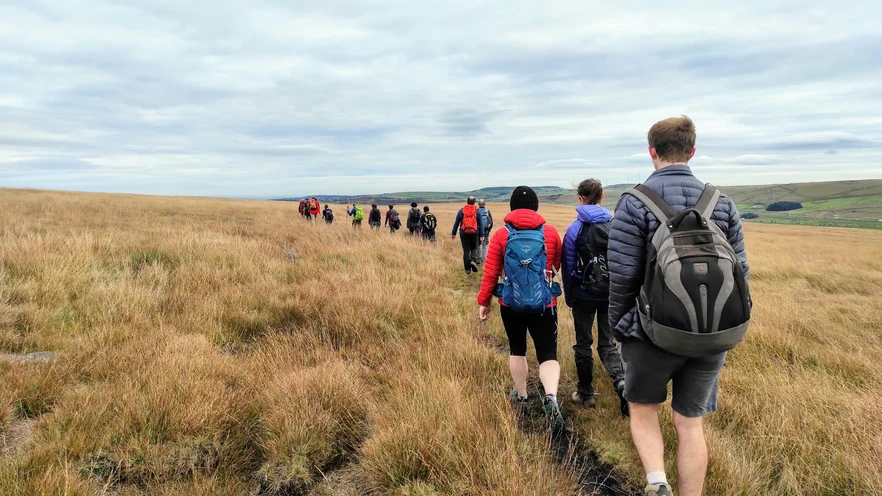 There are a few tips and tricks that can really help bring your trip to life, ensure everything runs smoothly, and actually outline how to book the ideal escape.
There are a few tips and tricks that can really help bring your trip to life, ensure everything runs smoothly, and actually outline how to book the ideal escape.
Getting there and away
The Fife Coastal Path's excellent transport links make it remarkably accessible from anywhere in the UK. Edinburgh serves as the main gateway, with trains reaching multiple points along the path in under an hour.
From Edinburgh Waverley, direct trains serve North Queensferry (28 minutes), Aberdour (32 minutes), Burntisland (35 minutes), Kinghorn (38 minutes), Kirkcaldy (40 minutes), and the newly reopened Leven station (65 minutes). Services run half-hourly during peak times, hourly evenings and weekends. A day return to Kirkcaldy costs around £11.40. Glasgow connections take slightly longer but remain straightforward. Change at Edinburgh for most Fife destinations, or take direct services to Kirkcaldy (75 minutes) via the suburban route. From Aberdeen, the quickest option involves changing at Edinburgh, with a total journey time of around 3 hours.
The game-changing JET 787 bus service (launched May 2025) connects Edinburgh Airport directly to St Andrews in 90 minutes (£12 single), eliminating the previous tedious train-bus combination. This makes fly-in coastal walking holidays genuinely practical.
For the path's extremities, Kincardine requires a train to Stirling, then a bus (total 90 minutes from Edinburgh), while Newburgh connects via Perth. Neither is really a problem with proper planning.
Parking
The Fife Coast and Countryside Trust manages 14 coastal car parks with overnight facilities specifically for coastal path walkers. Most offer two hours free, then £2 for all day, with designated overnight spaces (£5-10/night, two-night maximum).
Elie Ruby Bay provides seven overnight spaces right beside the beach. Kingsbarns offers eight spaces with easy path access. Aberdour Silver Sands has eleven overnight bays near the station for train combinations. Book overnight parking through the Trust website during peak season.
For section walking, strategic parking with bus returns works brilliantly. Park at Crail (free above harbour), walk to St Andrews, catch the 95 bus back (£4.50). The Stagecoach East Scotland Dayrider (£12.20) allows unlimited travel, perfect for walking multiple sections.
When to Go: Seasonal secrets
Late April through May delivers near-perfect conditions. Daylight extends to 17+ hours by month's end, wildflowers carpet the clifftops, and you'll beat both summer crowds and midges. Average temperatures climb from 11°C to 16°C, with April seeing the year's lowest rainfall (41mm).
September to early October rivals spring for ideal walking. Warm enough for t-shirt days (average 14-16°C), cool enough for comfortable hiking, with autumn light that photographers dream about. The students return to St Andrews, bringing energy without summer's overwhelming tourist numbers. Seal pups have been appearing at Tentsmuir since October.
June through August brings warmth and long days, but also crowds and midges. Coastal breezes help with the latter (pack Smidge repellent regardless), but accommodation prices spike and availability plummets. Book three months ahead, minimum. The upside? Beach swimming becomes genuinely pleasant, and evening walks stretch past 10 pm.
November through March offers wild beauty and solitude. Winter storms create spectacular wave-watching (from safe vantage points), and you'll have beaches entirely to yourself. Many cafes and some accommodations close, but hardy walkers find unique rewards. Just pack seriously waterproof gear and accept eight-hour daylight in December.
Where to stay: From camping to castles
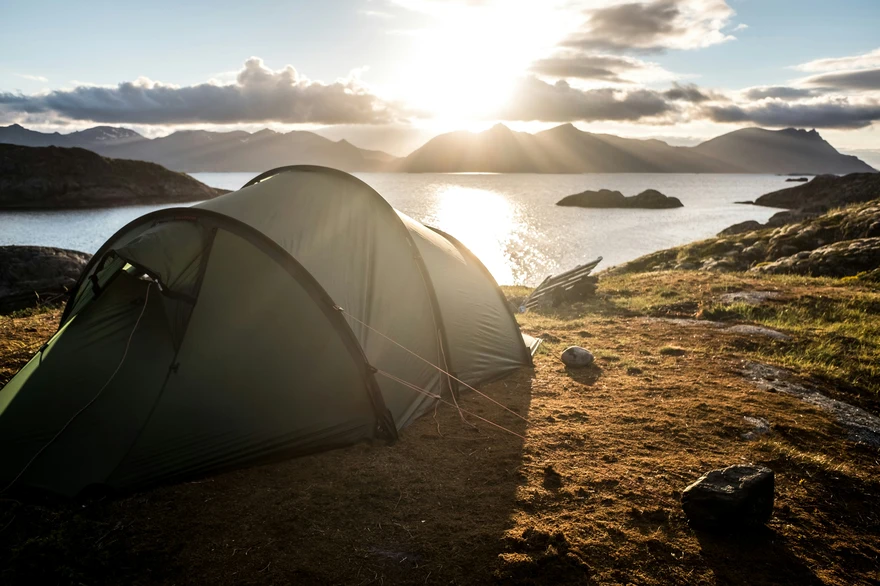 We’ve included hotels in each location if you go through the itinerary section above, but there are plenty of options worth checking out. Again, it’s your adventure, so be open to exploring in a way that works for you. That said, as a bit of a side note, though the Balmerino to Newburgh section can feel a little limited, so book early in advance, or get creative with your other options, such as:
We’ve included hotels in each location if you go through the itinerary section above, but there are plenty of options worth checking out. Again, it’s your adventure, so be open to exploring in a way that works for you. That said, as a bit of a side note, though the Balmerino to Newburgh section can feel a little limited, so book early in advance, or get creative with your other options, such as:
Luxury hotels include Fairmont St Andrews (from £180/night) with clifftop spa facilities, Old Course Hotel (from £400/night) for golf pilgrims, and Balbirnie House near Glenrothes (from £140/night) set in 400-acre parkland.
Boutique B&Bs offer more character and local knowledge. The Spindrift in Anstruther (from £110/night) serves exceptional breakfasts, No.12 St Andrews (from £95/night) provides sea views with smoked haddock kedgeree, while Sandcastle Cottage in Elie (from £85/night) puts you steps from the beach.
Budget options exist but require flexibility. Cairnsmill Caravan Park near St Andrews (from £25/pitch) accepts tents with good facilities. Saints Hostel in St Andrews offers dorm beds from £28. The SYHA Hostelling Scotland network doesn't reach Fife, but independent hostels fill gaps.
Wild camping proves challenging. Most coastline comprises working farmland, golf courses, or villages. Legal under Scottish access rights, but genuinely wild spots remain rare. Best bets include Tentsmuir Forest (with restrictions) and quiet beaches away from towns. Always follow Leave No Trace principles.
What to pack & kit that makes the difference
If you’re walking every day for over a week, you’re going to need the right gear. Everyday shoes will usually not last and won’t help your feet. Depending on the weather, you’ll also want to come with food, snacks, and clothes.Footwear makes or breaks your experience. Quality hiking boots with ankle support handle the varied terrain – beaches, muddy paths, rocky sections. Waterproofing is essential given Scotland's weather reputation. Break them in properly unless you want blisters.
Layering
Moisture-wicking base layer (never cotton)
Insulating mid-layer (fleece or down)
Waterproof/breathable outer shell
Waterproof overtrousers for serious rain
Navigation
Download the OS Maps app (£24 annual) with offline access. Paper OS Explorer maps 371, 370, and 363 cover the route. A GPS watch can help track progress. Mobile coverage is generally good except in the Kingsbarns – St. Andrews section.
Safety kit
It may seem a little over the top, but remember, you’re next to the sea for much of your journey, as well as rugged cliffs, so it’s better to be prepared.
First aid supplies (especially blister treatment)
Whistle (six blasts signals emergency)
Head torch for winter's short days
Emergency shelter or survival bag
Tide times printed/saved offline
Comfort items
Walking poles reduce knee strain significantly
Midge repellent (May-September essential)
Sun protection (really – Scottish sun burns)
Binoculars for wildlife watching
Dry bags for electronics
The Challenging Bits of the Fife Coastal Path (And How to Handle Them)
As with most hikes, there are casual strolls and bits that are a little more difficult. If the coastal walk sounds like something you’ll love, you’ll probably be okay. However, it’s always beneficial to know what’s ahead so you can plan accordingly.
The infamous tidal section
Between Kingsbarns and St Andrews lies the path's most notorious section – beautiful but demanding, with timing critical for safe passage. The route alternates between sandy beaches, boulder fields, and rocky platforms, with several sections only passable around low tide.
Check tide times for St Andrews (not Kingsbarns) at tidetimes.org.uk. Plan to pass through within two hours either side of low water. The 38 numbered safety markers installed in 2022 provide exact location references for emergency services – note them as you pass.
The scramble over Buddo Rock requires careful foot placement when wet. The boulder field beyond tests ankle stability – walking poles help immensely. If caught by a rising tide, head to the markers, leading inland to the coastal road.
Alternative high-tide routes exist but add 3-4 miles inland through farmland. Many walkers deliberately choose these to avoid the scrambling entirely. There's no shame in taking the safer option, especially in poor weather.
Navigation through towns
Waymarking occasionally disappears in urban areas where the route follows streets. Kirkcaldy proves particularly confusing with multiple route options through the town centre. Download the official fife GPX file from fifecoastandcountrysidetrust.co.uk to your phone.
Common navigation mistakes include missing the turn at Dysart harbour (continue along the waterfront, don't climb inland) and losing the route through Leven's industrial estate (follow NCN 1 signs when coastal path markers disappear).
Weather contingencies
Horizontal rain isn't hyperbole – Atlantic weather systems regularly deliver moisture at seemingly impossible angles. Full waterproofs (jacket AND trousers) prove essential year-round. Coastal winds amplify cold, making that sunny 12°C feel arctic without proper layers. Fog rolls in quickly, reducing visibility to metres. The path edge isn't always obvious in these conditions – GPS navigation becomes crucial. Consider postponing exposed sections like Kingsbarns during thick haar (sea fog).
What wildlife and natural wonders can you find along the way?
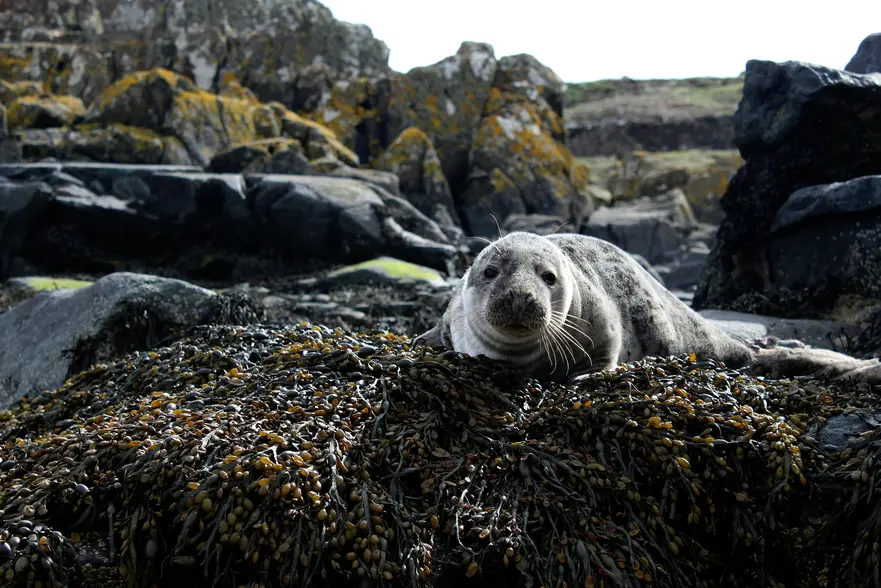 The Fife coast is Scotland's wildlife watching secret – no expensive boat trips or specialist guides required. From bottlenose dolphins performing offshore acrobatics to red squirrels scampering through Tentsmuir's pine forests, seals hauling out on secluded beaches to thousands of seabirds creating clifftop cities, this path delivers extraordinary encounters at every turn. Add in fascinating geology from ancient volcanic plugs to ever-shifting sand dunes, and you'll understand why naturalists consider this one of Scotland's most rewarding coastal adventures.
The Fife coast is Scotland's wildlife watching secret – no expensive boat trips or specialist guides required. From bottlenose dolphins performing offshore acrobatics to red squirrels scampering through Tentsmuir's pine forests, seals hauling out on secluded beaches to thousands of seabirds creating clifftop cities, this path delivers extraordinary encounters at every turn. Add in fascinating geology from ancient volcanic plugs to ever-shifting sand dunes, and you'll understand why naturalists consider this one of Scotland's most rewarding coastal adventures.
Marine stars of the show
Bottlenose dolphins (200-strong pod) patrol hotspots at Kinghorn and St Andrews – early morning/evening best
Grey seals haul out at Kingsbarns, Tentsmuir Point, and Pittenweem rocks (keep 50m distance)
Seabird cities on the Isle of May: puffins (May-July), gannets, and guillemots creating cacophonous colonies
Tentsmuir's living laboratory
Scotland's largest continuous pine forest grows five metres seaward annually. Red squirrels thrive in the morning along the great trails in the forest, while roe and red deer browse the clearings. WWII concrete blocks and Polish Army training remnants add historical intrigue to this 150-year transformation from sand to forest.
🪨 Ancient geology exposed
Rock and spindle at Kingsbarns: dramatic basalt columns piercing sandstone
Volcanic plugs create St Monans' distinctive headland
Wemyss Caves hide Pictish and Bronze Age carvings (some closed for safety)
Rock pools at Elie Ness and Pittenweem teem with hermit crabs, blennies, and anemones
Also, don’t forget that due to its geographical position, Fife Ness is a migration hotspot - Scotland's premier bird migration watchpoint where rare vagrants regularly appear alongside common species – bringing binoculars pays off.
Food and Drink: The Coastal Feast
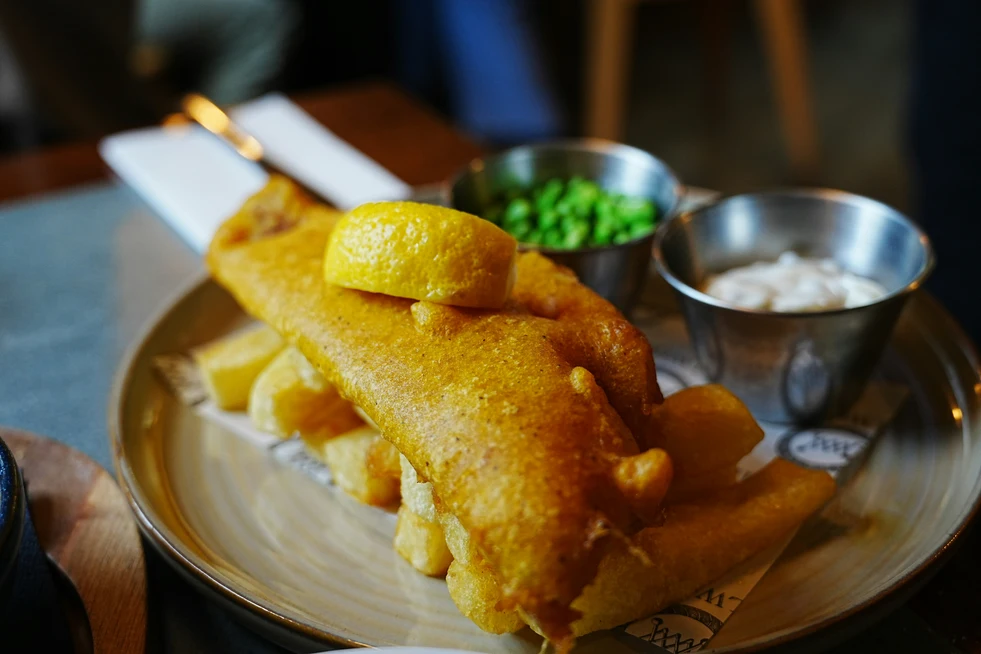 The Fife coast serves up more than spectacular views – this is serious foodie territory where fishing boats land your dinner and award-winning chippies have queues that snake around harbours. From Michelin-guide fine dining to legendary lobster shacks, here's where to fuel your coastal adventure.
The Fife coast serves up more than spectacular views – this is serious foodie territory where fishing boats land your dinner and award-winning chippies have queues that snake around harbours. From Michelin-guide fine dining to legendary lobster shacks, here's where to fuel your coastal adventure.
The Championship Chippies Anstruther Fish Bar earned its "UK's Best" title through fresh morning haddock, hand-cut Maris Piper chips, and perfect batter. The £12.95 price tag makes sense when you see the massive portions.
Cromars in St Andrews offers comparable quality with shorter waits, plus their whisky-spiked marie rose sauce.
The Wee Chippy (also Anstruther) delivers excellence minus the fame-fueled queues. Pro tip: Most places offer half portions – perfect for lunch without ruining dinner plans.
Harbour-to-Plate Seafood Reilly Shellfish at Crail harbour (weekends only) serves just-caught lobster rolls for £12 – bring cash and zero expectations of fancy dining.
The Dory Bistro in Pittenweem changes its menu based on what boats land below their windows.
Ship Inn in Elie transforms pub grub with dishes like halibut with samphire and brown shrimp butter.
Fine Dining Champions The Seafood Ristorante overlooks St Andrews' Old Course (tasting menu £85) – book weeks ahead for their Anstruther lobster thermidor.
Forgan's champions Scottish produce with 60+ Scottish gins, while Haar Restaurant at North Queensferry delivers Michelin-guide cooking with Forth Bridge views.
Fuel for the Trail Jannettas Gelateria opens at 9 am with proper Italian coffee in St Andrews.
Fisher and Donaldson bakeries sell those legendary fudge doughnuts that have powered countless coastal path miles – you'll find locations throughout Fife.
Insider Tips from You Need to Know
Looking for more tips to make your trip a success? Here’s what you need to know:
Money-saving strategies: Book accommodation directly rather than through booking sites – many offer 10% coastal path walker discounts. This may not always be possible, but savings can add up. Packed lunches from B&Bs save £10-15 daily. Stagecoach mobile tickets cost less than paper. Museums are often free after 3 pm (just mind out for the last entry).
Crowd-avoiding tactics: Start walking by 8 am to beat day-trippers. September weekdays offer summer weather without families. Avoid St Andrews during graduation week (late June) and golf championships. East Neuk villages are empty after 5 pm, when tour buses leave.
Local secrets: The Cocoa Tree Shop in Pittenweem makes artisan chocolate from bean to bar (tours Saturdays). The paper shop in Crail sells the best filled rolls for miles. St Andrews students' union bars welcome non-students – cheapest pints in town.
Common mistakes:
Underestimating Scottish weather (it will rain horizontally)
Not booking weekend accommodation in advance
Missing the Chain Walk due to poor tide timing
Rushing through villages to make miles
Forgetting cash (some places remain card-free)
Your Coastal Adventure Awaits
The Fife Coastal Path delivers that increasingly rare combination: genuine adventure without extreme difficulty or remote isolation.
Whether you tackle the full 117-mile journey or cherry-pick the stunning East Neuk section for a long weekend, you'll discover spectacular scenery, fascinating history, wildlife encounters, and world-class seafood all within easy reach of major cities. The excellent infrastructure and flexible public transport mean you can be as ambitious or relaxed as you choose – challenging tidal scrambles or gentle clifftop strolls, wild camping or boutique hotels.So check those tide times, book that first night's accommodation, and pack those waterproofs.
Scotland's most rewarding coastal adventure awaits, and the only question remaining is this: will you walk the whole magnificent path, or start with a perfect weekend taster that'll inevitably draw you back for more?
The path is calling – time to answer.
